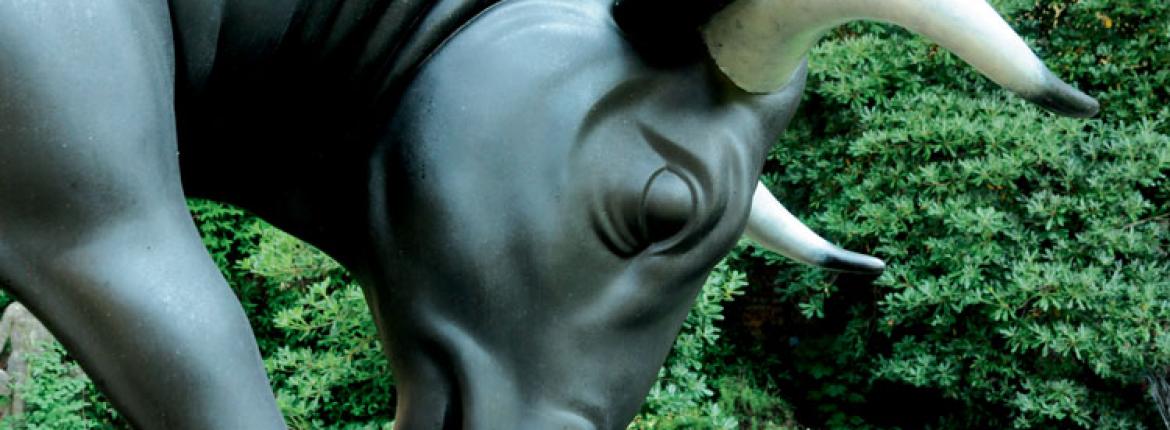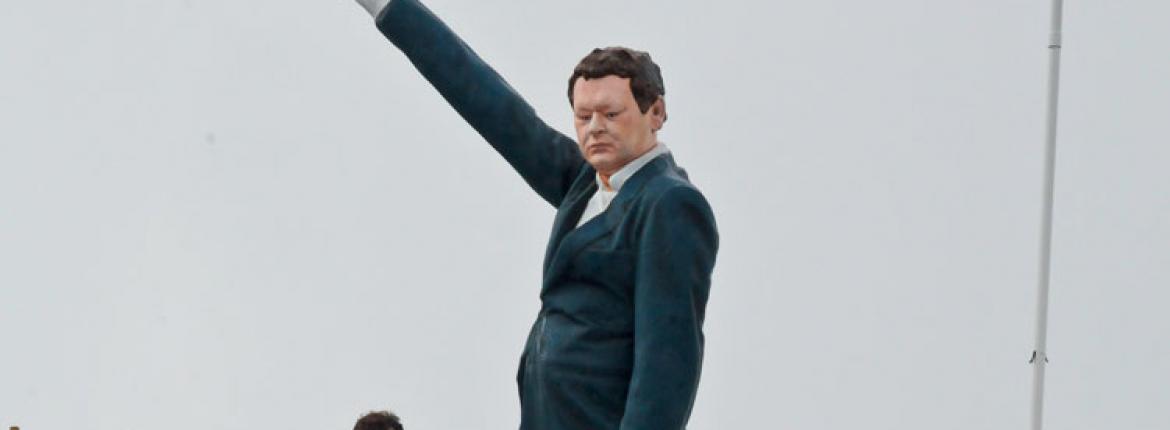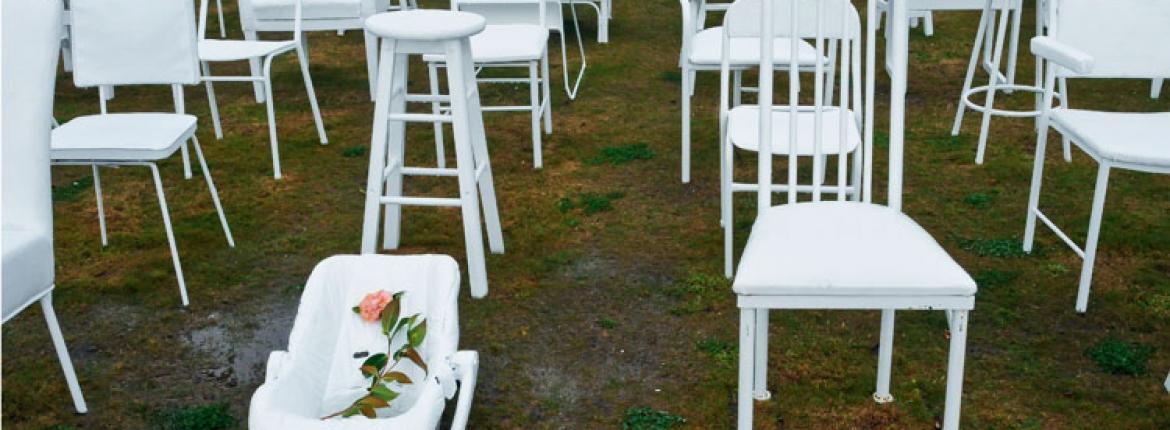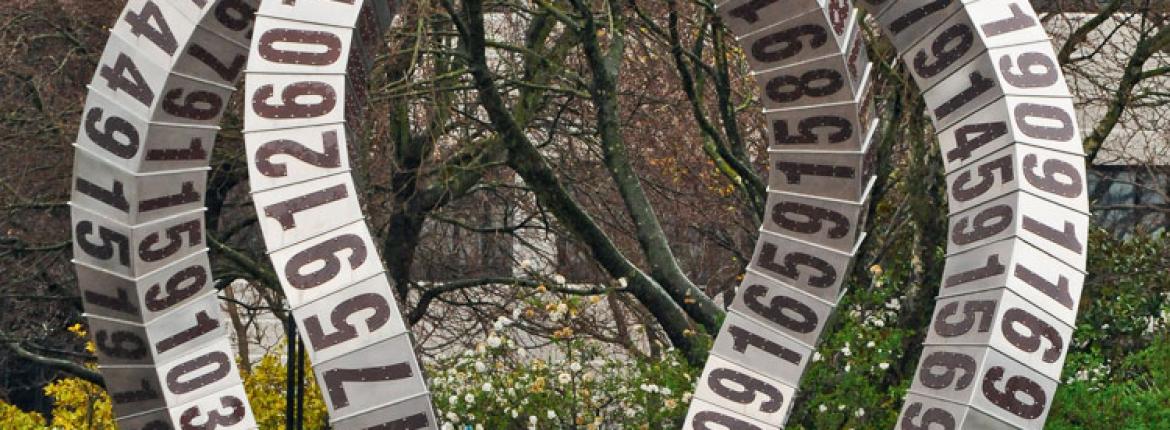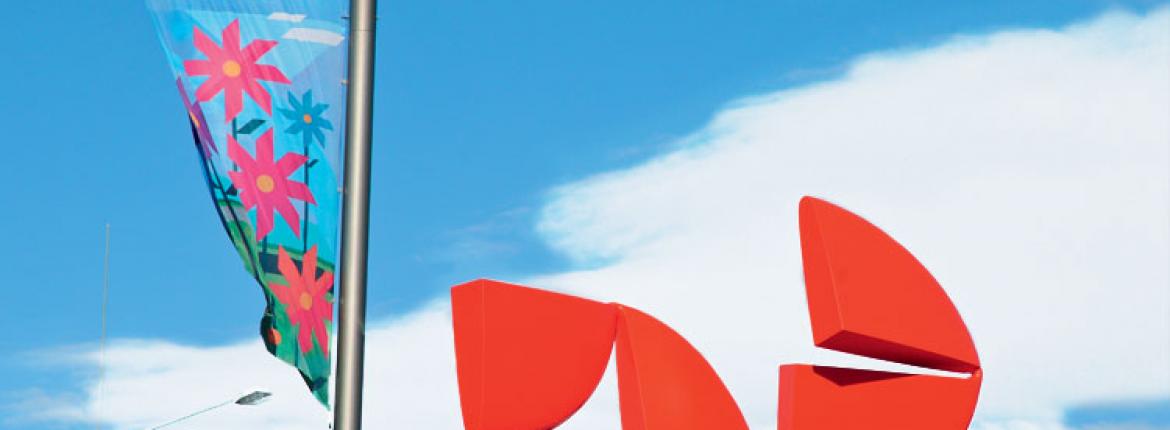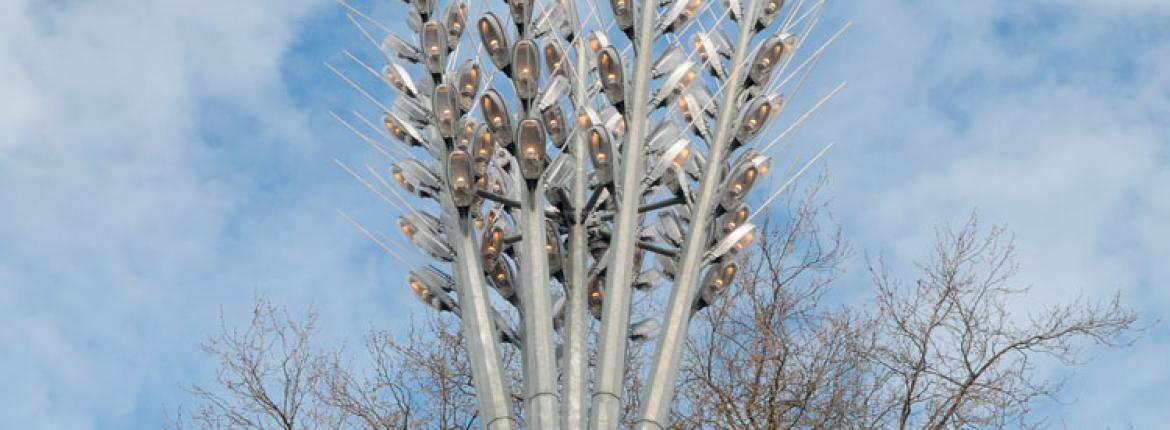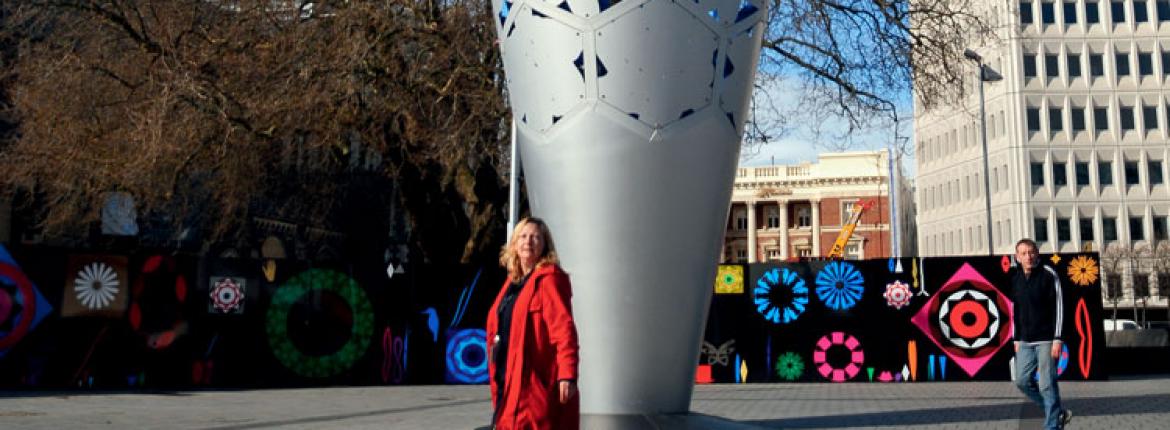Buildings are missing from the city centre, hundreds of them, tumbled and crumbled by wreckers’ balls and jackhammers. But art has appeared – murals, graffiti art, paintings on walls and sculpture. Lots of it. Much of the sculpture is new. Some has been there for a while, but is more obvious now, with fewer high-rise buildings around. I begin a city centre sculpture walk in Cathedral Square next to the fallen cathedral. My heart contracts every time I see it. I want it fixed, back to its proud-settler Gothic glory. Now that its spire has gone, the tall thing in The Square is The Chalice.
The Chalice, 2001, by Neil Dawson is conical and 18 metres tall. Its filigree-like delicacy and transparency belies the fact that it is made of steel. Silhouettes of leaves from native trees touch tips and form the shiny exterior, with leaves growing bigger and more exuberantly as they reach up to the sun.
Nearby, in High Street, Flour Power, 2008, Regan Gentry, pays homage to the early settlers, the wheat they grew on the Canterbury Plains and the importance of the land’s productivity to the prosperity of Christchurch. It’s a 13-metre sheaf of wheat and the figurative flower heads light up bright at night.
Nucleus, 2006, by Phil Price is a large, red, carbon-fibre sphere, divided into four parts which move in random patterns according to the whims of the wind. The sphere sits on top of a tall pedestal, shaped like a swish, adding elegance to this dynamic work. I salute its tenacity. For the two and a half years the Red Zone was closed to people, it kept on turning and performing in fanciful ways, with only rats, birds and cockroaches to admire it.
People don’t usually look up for sculpture but, now, with Christchurch’s skyline changing constantly as broken buildings come down and new ones rise, they are more inclined to. The reward for scanning the skyline in High Street is Comin’ Down by Ronnie van Hout, installed on top of the old Post Office Building last year. A dismayed-looking man points skywards. His elongated arm echoes the many cranes that dot the skyline; the man looks down at the comin’ down city below.
High Street finishes at the gate of Christchurch Polytechnic Institute of Technology and Anton Parsons’ Passing Time, 2010, marks the spot. This giant looping ribbon of connected stainless steel boxes can be walked through, sat on and admired from a myriad of angles. Each box has a copper number embedded into the four external faces and represents one of the 104 years since the first version of this learning institution was established — until 2010, when the sculpture was made. Those numbers, hundreds of them, are reminiscent of barcodes, technology, science and the complicated numbers-based world we live in. Even for those who don’t know the backstory, it’s perfectly situated by this place of learning.
 A chair is not just a chair. Each of the 185 chairs, (Peter Majendie, 2012) is different to all the others, just as the 185 people who lost their lives in the February 2011 earthquake were unique individuals. The chairs are painted white so there is uniformity in their differences. I imagine an elderly man in the plastic garden chair, an office worker on the computer chair, a bohemian woman on the bentwood and the baby in the car seat. This empty-chair art installation is a heart-wrenching tribute to lost loved ones and the idea of eternal absence.
A chair is not just a chair. Each of the 185 chairs, (Peter Majendie, 2012) is different to all the others, just as the 185 people who lost their lives in the February 2011 earthquake were unique individuals. The chairs are painted white so there is uniformity in their differences. I imagine an elderly man in the plastic garden chair, an office worker on the computer chair, a bohemian woman on the bentwood and the baby in the car seat. This empty-chair art installation is a heart-wrenching tribute to lost loved ones and the idea of eternal absence.
Art and infrastructure merge in Solidarity Grid by German artist Mischa Kuball. Twenty-one operational street lamps are being donated from cities around the world and installed along the walkway in Hagley Park, next to Park Terrace. Each street lamp is different, typifying the cultural character of its origin city. So far, lamps from Belgrade, Kurashiki (in Japan), Dusseldorf, Sydney and Adelaide are shining; the remaining 16 will be installed over the next two years.
Chapman’s Homer (Michael Parekowhai, 2011) is a massive bronze bull standing on top of a grand piano; horned head lowered, he glowers at his admirers. The bull reeks of strength and power. No wonder the people of Christchurch so readily raised the money to buy it.
In 2015, it will be the centrepiece of the forecourt of the Christchurch Art Gallery when it reopens. Meanwhile, it has a temporary home in the centre of town.
Art often encapsulates a place and a situation more succinctly than any other media. “Shine on,” say the street lamps. The message from the empty chairs is, “we will never forget you”; “kia kaha” says the bull. Comin’ Down chuckles at the whole post-quake situation and The Chalice reaches to a bright future.
Reported by Liz Light for our AA Directions Autumn 2024 issue

